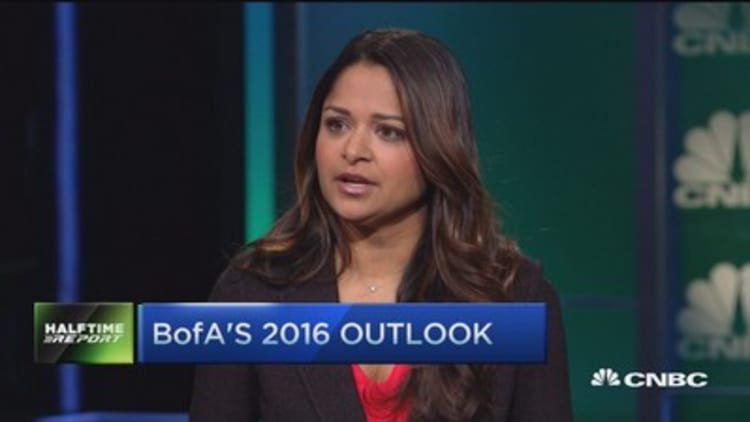
Sentiment on Wall Street has gotten so bad that it's good, at least according to one indicator with a high degree of accuracy.
Investor optimism has continued to erode through the current correcting, with some gauges showing bearishness at multiyear highs.
One in particular — the Bank of America Merrill Lynch Sell Side Indicator — puts sentiment "close to where it was at the market lows of March 2009," the firm's strategists said in a report Monday. That date will be familiar to many investors as it marked the Great Recession low and preceded a 200 percent bull market surge.
Read More This rare, fearful Fed trade may set tone for year
The gauge is a fairly basic measure of how the biggest portfolio managers are positioned. Over the course of the past 15 years, the traditional stock weighting is around 60 percent; currently, that level stands at 52.1 percent, a 0.7 percentage point slide from December and below the 52.9 percent threshold that would trigger a "buy" signal.
Using a little math, the indicator points to a 17 percent price return for the next 12 months, which gets the to the 2,270 range, based on Friday's closing level.
There's even a possibility for a little upside from that projection.
At this level, the "buy" indicator has preceded positive returns 95 percent of the time, with a median 12-month return of 24 percent. That would put the S&P 500 at 2,405.
To be sure, the road to such sizable gains would be a rough one, and not what BofAML considers to the most likely path. The firm has a 2,200 price target on the index for the end of 2016, or a 13 percent gain from here.
Read More Cramer: Keep an eye on oil prices
Moreover, the market faces a slew of headwinds. The accommodative Fed policy that paved the way for such substantial growth is no longer in place, corporate profits have stagnated and economic growth has stalled — factors that already have led some on Wall Street to trim their market forecasts. JPMorgan Chase also had a 2,200 price target but recently cut it to 2,000. Before the year even began, RBC lowered its target from 2,300 to a still bullish 2,225.
The BofAML strategy team, led by Savita Subramanian, said it considers the SSI "an input into our target, along with fundamental and technical signals" that "has been a reliable contrary indicator."
"Given the contrarian nature of this indicator, we remain encouraged by Wall Street's ongoing lack of optimism and the fact that strategists are still recommending that investors significantly underweight equities," the firm said in a note.






